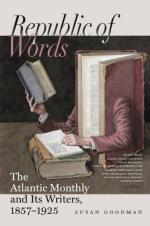Jane Austen’s life-world presented such a limited experience that it is marvellous where she could have found the models from which she studied such a variety of forms. It is only another proof that the secret lies in the genius which seizes, not in the material which is seized. We have been told by one who knew her well, that Miss Austen never intentionally drew portraits from individuals, and avoided, if possible, all sketches that could be recognized. But she was so faithful to Nature, that many of her acquaintance, whose characters had never entered her mind, were much offended, and could not be persuaded that they or their friends had not been depicted in some of her less attractive personages: a feeling which we have frequently shared; for, as the touches of her pencil brought out the light and shades very quietly, we have been startled to recognize our own portrait come gradually out on the canvas, especially since we are not equal to the courage of Cromwell, who said, “Paint me as I am.”
In the “Autobiography of Sir Egerton Brydges” we find the following passage: it is characteristic of the man:—
“I remember Jane Austen, the novelist, a little child. Her mother was a Miss Leigh, whose paternal grandmother was a sister of the first Duke of Chandos. Mr. Austen was of a Kentish family, of which several branches have been settled in the Weald, and some are still remaining there. When I knew Jane Austen, I never suspected she was an authoress; but my eyes told me that she was fair and handsome, slight and elegant, with cheeks a little too full. The last time, I think, I saw her was at Ramsgate, in 1803; perhaps she was then about twenty-seven years old. Even then I did not know that she was addicted to literary composition.”
We can readily suppose that the spheres of Jane Austen and Sir Egerton could not be very congenial; and it does not appear that he was ever tempted from the contemplation of his own performances, to read her “literary compositions.” A letter from Robert Southey to Sir Egerton shows that the latter had not quite forgotten her. Southey writes, under the dale of Keswick, April, 1830:—
“You mention Miss Austen; her novels are more true to Nature, and have (for my sympathies) passages of finer feeling than any others of this age. She was a person of whom I have heard so much, and think so highly, that I regret not having seen her, or ever had an opportunity of testifying to her the respect which I felt for her.”
A pleasant anecdote, told to us on good authority in England, is illustrative of Miss Austen’s power over various minds. A party of distinguished literary men met at a country-seat; among them was Macaulay, and, we believe, Hallam; at all events, they were men of high reputation. While discussing the merits of various authors, it was proposed that each should write down the name of that work of fiction which had given him the greatest pleasure. Much surprise and amusement followed; for, on opening the slips of paper, seven bore the name of “Mansfield Park,”—a coincidence of opinion most rare, and a tribute to an author unsurpassed.




